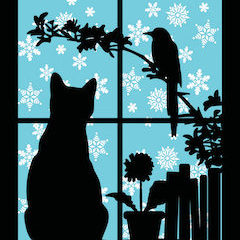Hello Friends!
It’s a Wednesday evening, which now feels like the Sunday of a 3 day weekend, as I’ve come to really cherish my “normal days” (Tues, Wed & Thurs) without the 4:30am wakeup and all that follows. I remain super grateful to have the opportunity to experience this chapter, but let’s be clear – it’s an exhausting (mentally and physically) job. I may only be doing it a few days, but each day feels pretty epic and my appreciation for those who do it every day, 365, is IMMENSE.
No matter how glad I am be there, I’m frankly equally glad to be such a short-timer. I am uttering million prayers of thanks for all the lucky stars that led me to a life where physical labor for an hourly wage was not my path. On behalf of everyone who has never lived that way, I’m living this mile in another’s shoes. For all of us who are born to so much good fortune, comfort, ease, resources and, yes, privilege, let us not take this for granted – as easy as it is to do. Among the many, many lessons I’m learning (re-learning) is just how fortunate I am to have the life I lead. The gratitude journal overflows.
learning by doing – the only way
In an earlier post I shared my simple overview of the org chart of the barn team, and probably gave short shrift to the responsibilities that go with each role. From my low-man-on-the-totem-pole perspective, my role is definitely the simplest: walk horse, hold horse for bath, walk horse, put away, repeat. I’m really super comfortable with the minimal decision making I need to make in this role, so I can just focus on the many, tiny but impactful details that go into my success in this simple job – much of which is mental/emotional or dare I say “energetic” (woo woo alert!).
However, as my tenure continues and other factors play out among the other team-members, I find that I’m being asked/expected to add some new tricks to my bag. All of which I’m glad to do, if only to avoid the awkwardness of the “waiting” when there’s no horse for me to walk. With so much that needs to be done, it’s really not great to be sitting there not doing anything (and I’m not known as a particularly good “sitter”). Until pretty recently, I simply wasn’t directed (or likely trusted) to do much more. Tis the nature of being the new kid!
Well, all this changed on Monday (Day 13) when I arrived to find that Tito (groom) and Reena (hot walker) had finally managed a day off – much, much deserved. The result being that there were fewer of us to carry the load of the day’s tasks and keep the trains running. It was a great day to learn!
cleaning Stalls: a link to history
So, as we jumped in to our short-handed Monday, I started with what I knew – buckets. I must admit, I love doing buckets. There’s a right way to do it, it’s straightforward, it’s satisfying and it’s pretty hard to screw up. Bring on les buckets! But then, that’s really the easy part, isn’t it? While the horses need to have their water (and feed) ready when they return from their work, the bigger issue is that they also need for their stall to be ready for them when they get done – a much larger task. This heavy and quintessentially horsey task generally falls to the groom as part of his or her sequence of preparation for the horse’s work of the day. On Monday, it fell to all of us to help get them done as Robert worked his way through the horses – and thus, a lesson & a link to history.
Stall cleaning (as observed by me) step-by-step:
- First, you tie your horse up, so you can work around him safely. At the same time, you can remove his buckets and put them outside the stall – ready for cleaning.
- You ou remove all of the soiled bedding – and there’s ALOT. Those metabolism are on super-drive and over the course of the night, they tear them up and make quite a mess.
- The strategy is to remove all the dirty bedding, but to try to keep as much of the clean, dry straw as possible – to be efficient. As you find good straw, you push it to the corners out of the way.
- Once complete this leaves you with the rubber pad and four corner “nests” – and then you an work on drying out the rubber pad (broom works)
- I’ve observed that usually from this stage, the groom then moves back into the prep for each horse – grooming, wrapping, and getting the saddle on for the track.
- Once the horse leaves for its work out, the clock starts ticking – to get that stall ready before the horse returns (when the bath begins), or at least get a good start, which can be finished while the hot walker is walking post-bath.
- Rebuilding. This is where I think some of the art comes into the equation. As you take the stockpiles of dry hay from the corners and fluffily cover the pads (and help with the final stages of drying – you hope).
- Then, the new bedding – tearing up the flakes (by hand, by pitchfork), throwing it about to create a deep, fresh, clean, fluffy (and therefore) safe bed to welcome the racehorse home to his stall. And, the goal is to be “all set” and ready as soon as his hot walker has finished her work and brings him back to his “Aula” bed.
The Link to History
As I was doing this process above, and thinking about the stall I stood in, I was struck by my connection to more people – who had all stood there in that stall before me – than I could possibly imagine. As I worked through the steps above, I started thinking about the way that this simple and very frequently repeated task now linked me to all the many, many people who who came before me (and who will follow me too). A powerful feeling of connectedness and shared experience with untold number of strangers, each with their own reasons for being in this role – and all are valid.
- How many other people have cleaned this stall? When was the first?
- How many days have horses lived in this stall?
- How old is this barn? When did it go up?
- Did those who worked here before me use the same technique?
- What advice would they give me?
- What stories would they tell me?
- What horses lived in these stalls?
OK, all food for thought and now, speaking of hay, it’s time to hit my own.
Thanks for reading & be well & stay safe!!!

